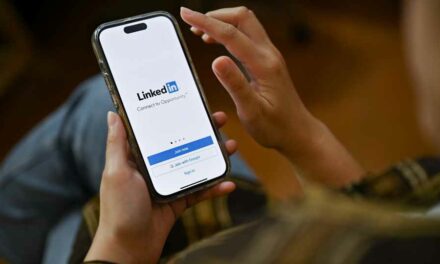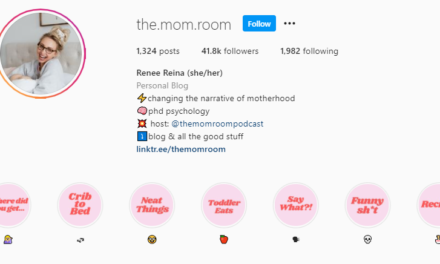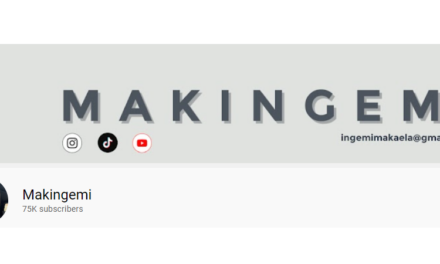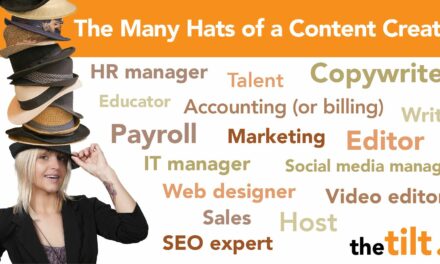A creator who intends to sell or promote their business needs a media kit.
Why?
A media kit serves as a differentiator between a hobbyist creator and a content entrepreneur. It brings a level of professionalism to your business and showcases to a brand the potential impact of working with you. It also makes it easier to understand exactly what your content business is and who your audience is. Finally, it’s a time saver for you and those who need the information.
Let’s explore what to include in your media kit and share some free templates to create yours.
Explain your why and your audience
Almost 90% of content entrepreneurs have a website. Yet, not enough use that website to explain to visitors the vision of the creator business and the results it’s experienced.
If you have a well-written, focused “about” page, congrats. You’ve already completed most of this step. If you haven’t, keep reading this section, and you can add it to your media kit and about page.
You should highlight why your business exists in two or three sentences. (Reread your mission statement for help.)
To illustrate what I mean, here’s our mission statement:
“The Tilt is for serious content creators. We help content creators grow full-time, independent media businesses that don’t rely on social media platforms. These content entrepreneurs develop, grow, and monetize audiences through content products such as newsletters, podcasts, courses, communities, and Web3/token projects.”
As you can see, the three sentences succinctly explain who the target audience is and how we help them.
In your #MediaKit, highlight why your business exists and who it serves in 2 or 3 sentences, says @AnnGynn. #CreatorEconomy #BrandSponsorships Share on XWith your business’ purpose detailed, you’re ready to get more specific. Detail how you accomplish your mission – formats, channels of operation, audience size on those channels, publishing frequency, etc.
But don’t stop there. Your audience’s engagement metrics matter to brands considering working with you through sponsorships or affiliate marketing deals. Audience size indicates big-sky potential. Audience interactions are better indicators of realistic outcomes for prospects.
Newsletter creators would benefit from detailing open and click-through rates. YouTube creators might detail view counts, time watched, etc. Podcasters should detail downloads and subscribers. While social media posters could include impressions and interactions.
If you already have done successful trade or paid partnerships, highlight a few of the best deals and their impact in your media kit.
CAVEAT: If your personal brand is closely tied to your creator business, detail more about who you are and why you’re in the business.
Showcase professionalism and offerings
Of the 303M creators in the creator economy, 17% own a business, according to a recent Adobe study. That’s over 51M people. It can be hard for your content business to stand out. A media kit is a simple step in doing that.
As we interview brands and agencies working on creator partnerships, one of their gripes is when they identify a creator to work with, but that creator isn’t prepared to do business. They can’t easily explain their audience, showcase what they do, or explain the impact.
By outlining all that in a well-designed media kit, you will be a step above millions competing for the same sponsorship and other partnership dollars.
A well-designed media kit can put you a step above the millions of creators competing for sponsorship and other partnership dollars. #ContentEntrepreneur #CreatorEconomy Share on XA media kit also is a good place to outline how these brands can work with you. A few years ago, YouTuber entrepreneur Roberto Blake shared his 11-page media kit with Insider.
On one page, he lists the opportunities for brands to work with him:
- Product/brand mention – YouTube
- Full brand integration – YouTube
- Event/activation video – YouTube
- Brand mention – Podcast, Instagram Story, Instagram post
- Amplification – Twitter, email list
- Meet-up/activation – event
- Sponsored presentation – event
- Sponsored article – LinkedIn
- Livestream mention – YouTube
He follows that listing page with specifics for the more detailed partnerships. For example, a branded integration on YouTube includes high-quality video and editing, closed captions, social media post, a call to action in the description, and a feature in his newsletter.
By outlining your services, brands can begin to recognize if their chosen distribution channels and formats mesh with yours. They also can envision what the partnership would look like.
CAVEAT: Don’t worry about creating a lengthy media kit like Roberto’s. Expand yours as your business grows and you have a more established framework. A simple one- or two-pager can work well, especially in the beginning.
As far as including your price list in the media kit, that decision is up to you. Jonathan Rick can help in that contemplation with his list of pros and cons of publicly posted pricing. In general, it’s easier to publish rates for opportunities that have no variables, like a newsletter ad or a sponsored article, than it is for partnerships with multiple levels, like cross-channel sponsorships.
Make it easier for brands, media, and you
As a writer, I’m thrilled to see a media kit that explains what the business does in one sentence. They’re rare finds but extremely helpful when I need to explain the business’ purpose in an article. It also lets you – the source – tell that story rather than me – the writer – try to figure out how to explain it.
If you’re doing cold outreach or pitching story ideas around your brand, a media kit – or (even better) a link to your media kit – can cut down the need for a lengthy explanation in your initial email or phone call. It also gives the prospect a reason to visit your website. And once there, who knows? They might see some other content that interests them.
Ready to get started?
Template media kits for creators
Even if you want to design your own media kit, scroll through some of these templates to see the variations of what to include and how to include them:
- Canva offers a wealth of free media kit templates to download.
- Adobe Express is another resource for free quality media kit templates.
Have a great tool or media kit example (yours or others) to share? Send them to Ann@TheTilt.com for inclusion in a future newsletter.
About the author
Ann regularly combines words and strategy for B2B, B2C, and nonprofits, continuing to live up to her high school nickname, Editor Ann. An IABC Communicator of the Year and founder of G Force Communication, Ann coaches and trains professionals in all things content. Connect with her on LinkedIn and Twitter.










